Framing 101: FAQs With Bluethumb’s Framers
Since launching framing on Bluethumb, it’s never been easier to have your dream piece shipped, framed and delivered to your door! However, we know many of you still have questions on the framing process and want to make sure you order with confidence and ease. So to help us answer your most frequently asked questions, we’ve spoken with Edi, the head framer of Fantastic Framing’s Melbourne branch, about the basics on our frames and how to take care of your framed artwork so that it lasts forever.
Each frame is custom made of industry standard oak. Could you tell us a little about this choice of material?
Our oak frames are made from local wood: Tassie Oak and Victorian Ash. They look and feel the same, and the only difference is where they come from (Tasmania or Victoria). Natural oak frames are made with raw timber, so sometimes you will see dark grainy stains on the wood. This just means that you got the real deal from the woods, and not some synthetic rubbish!
Natural wood comes in either a yellowish or pink tone. Both will change with time and sun exposure and become a more ‘woody’ colour.
Are there any differences between framing with glass and perspex?
Perspex is an acrylic sheet we use to protect artwork made on paper. The perspex is usually 3mm thick, has about 40% reflection control and around 50% UV protection. The biggest advantages of perspex are its weight (it’s considerably lighter than glass) and safety – if the frame falls or breaks the perspex will not break as glass would.
The glass we use usually is clear regular glass, which is 2-3 mm thick. For special requests, we have non-reflective glass with a matt finish. If you really want to enhance the colours of the artwork, we also offer Artglass, which has 99% reflection control and has 70-99% UV protection, so the artwork won’t fade under sun exposure. The price of Artglass is high, however if you intend to keep the artwork for a long time and get the best out of it, that should be your choice!
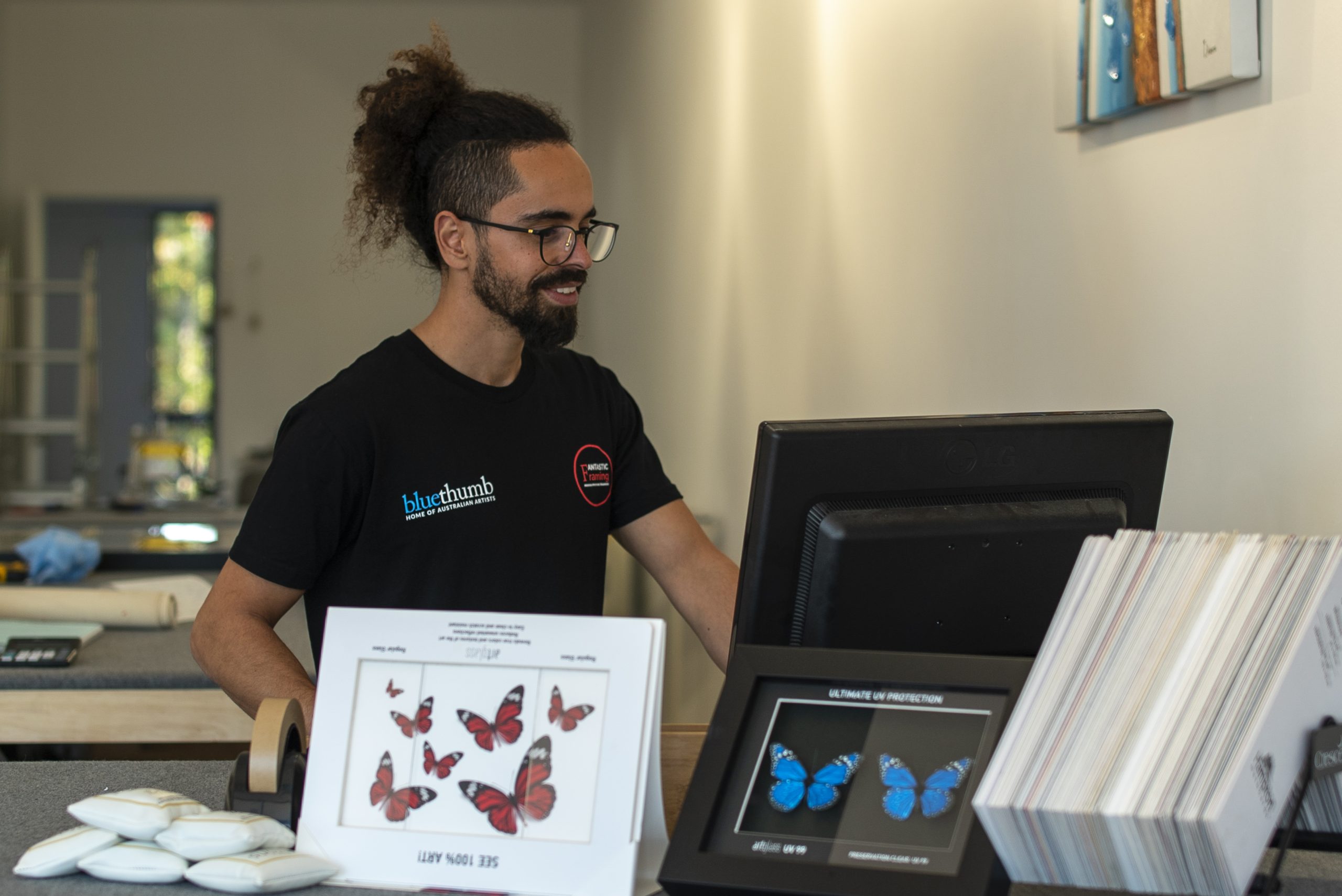
A difference you can literally see! Oron with some examples of Artglass. Contact help@bluethumb.com.au for a quote.
What are your top tips for taking care of an artwork?
Canvases should be kept away from AC units, and preferably from direct sunlight. You can dust them off once a month using dry cloth. Paper artworks should be kept from direct sunlight unless they have a UV protection glass. Glass can be cleaned with a wet cloth. Perspex can be cleaned with only your hand, or a special microfibre cloth. Overall, our number one tip is: don’t ever put artwork in direct sunlight for long periods of time!

The Sydney crew with the unmistakable work of Louise Numina, freshly stretched and ready to be delivered to the collector.
To mat board, or not to mat board?
Adding a mat board is a matter of taste. If the artwork already has a border, there is no need for an additional mat board. The reasons people choose to go with the board are to make the artwork bigger, or just to divide between the artwork and the frame.
What are some extra-special ways to frame works on paper?
A floating image is a fancy way to frame special artworks. It’s a little more expensive as it takes much more time to frame and we use more materials. In a floating image, the artwork is glued on a foam board and raised a bit from the backing, and also does not touch the glass, so you have an illusion of the artwork floating inside the frame. It’s a very good choice with old artworks, and paper with special edges, such as a papyrus-style artwork. You can also choose a shadow box frame by special request.
What are some techniques for hanging artworks in public spaces?
Our choice is security hanging, which is easy for us to install. This basically means that you can’t just take the artwork from the wall; you actually need to know what you’re doing so it can safely leave the wall. It’s perfect for public places.
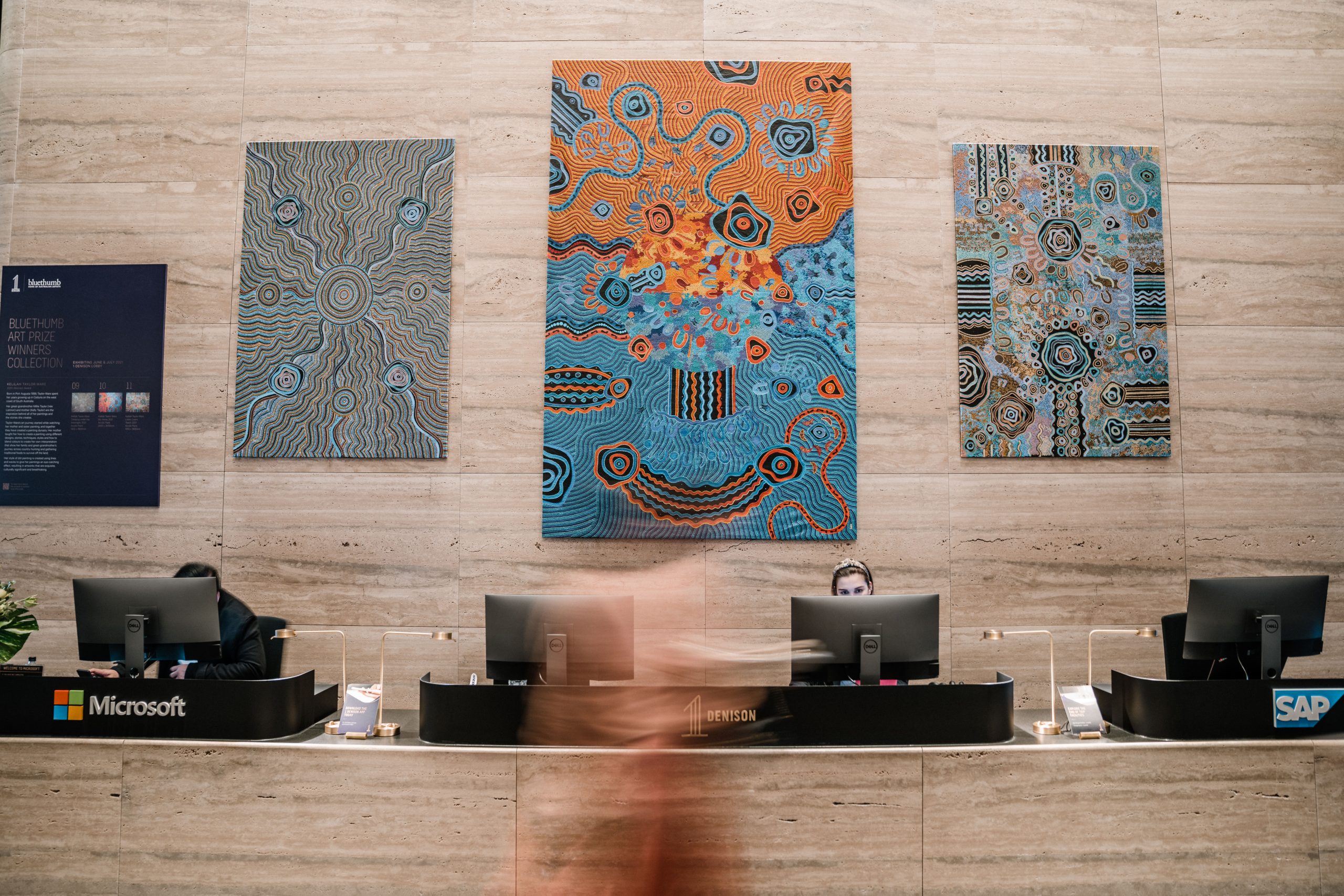
This stunning trifecta by Indigenous award winner Kelilah Taylor-Ware was on display for our winners exhibition of last year’s Bluethumb Art Prize at 1 Denison.
How excited are you about sponsoring the People’s Choice Award in this year’s Bluethumb Art Prize?
Yes, we are very happy to be a part of it!
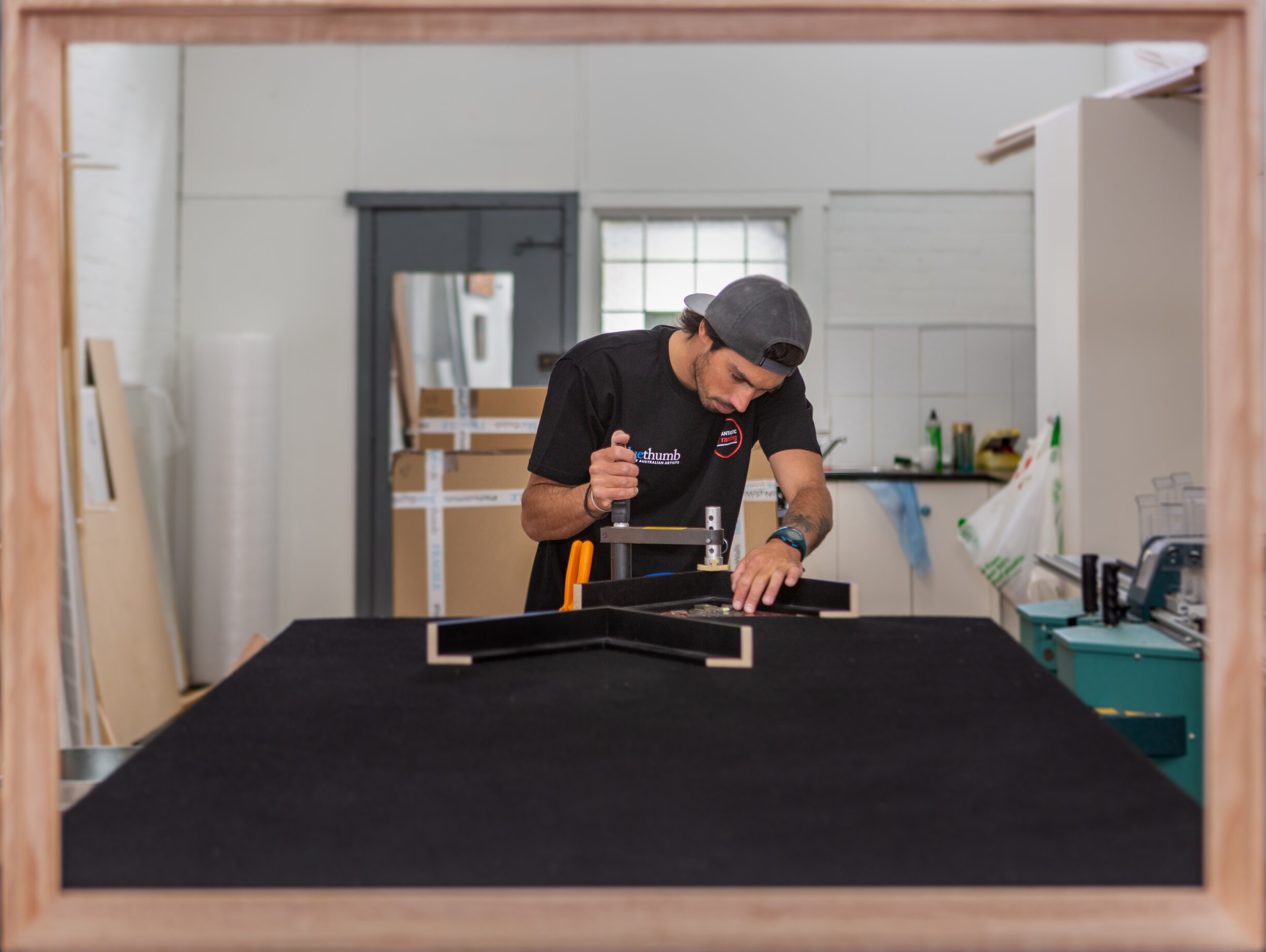
Lucas in action creating a black floating frame.
Fantastic Framing is one of our official sponsors for the Bluethumb Art Prize 2021. Click here to see the entries and for the full scoop on the event so far!


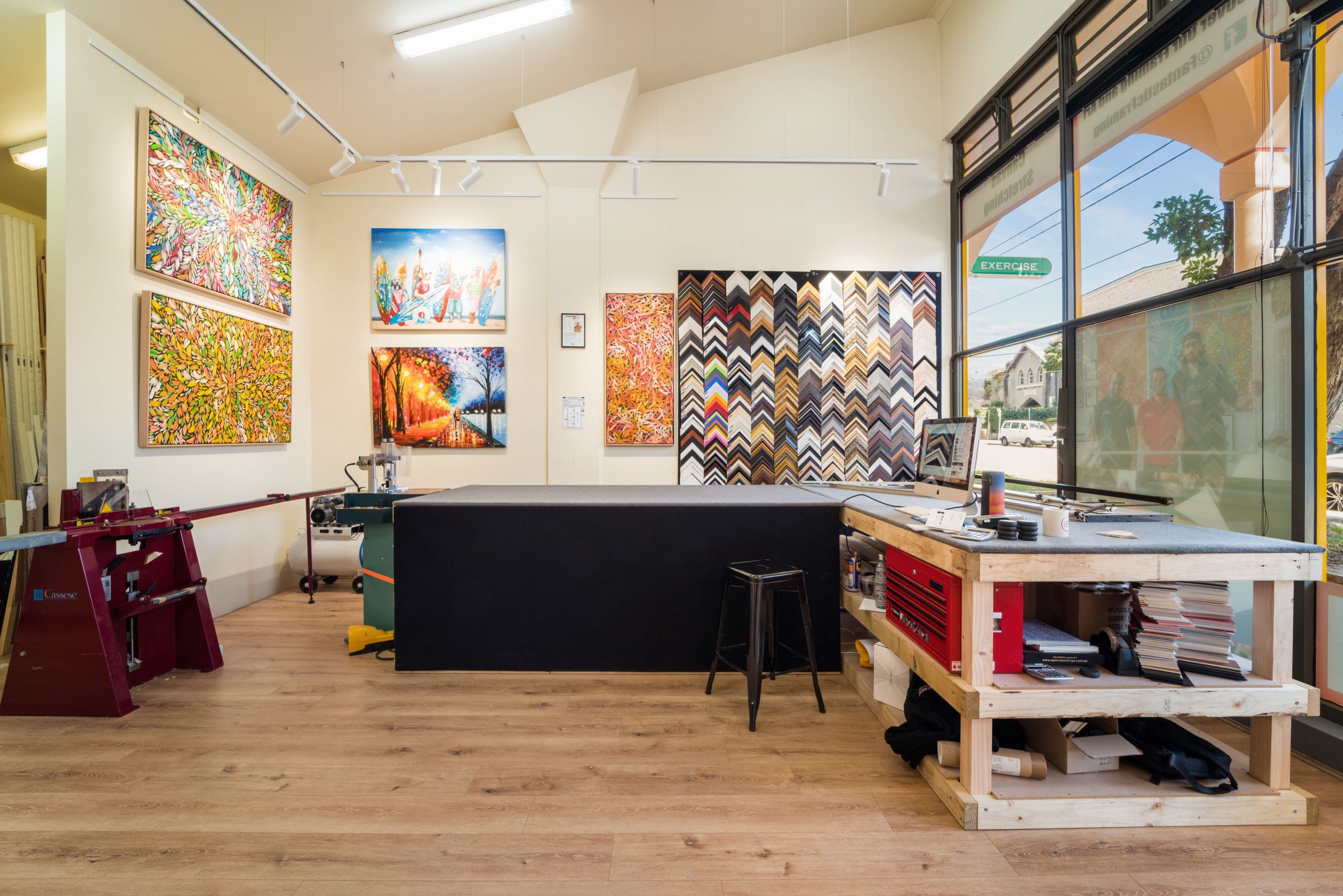


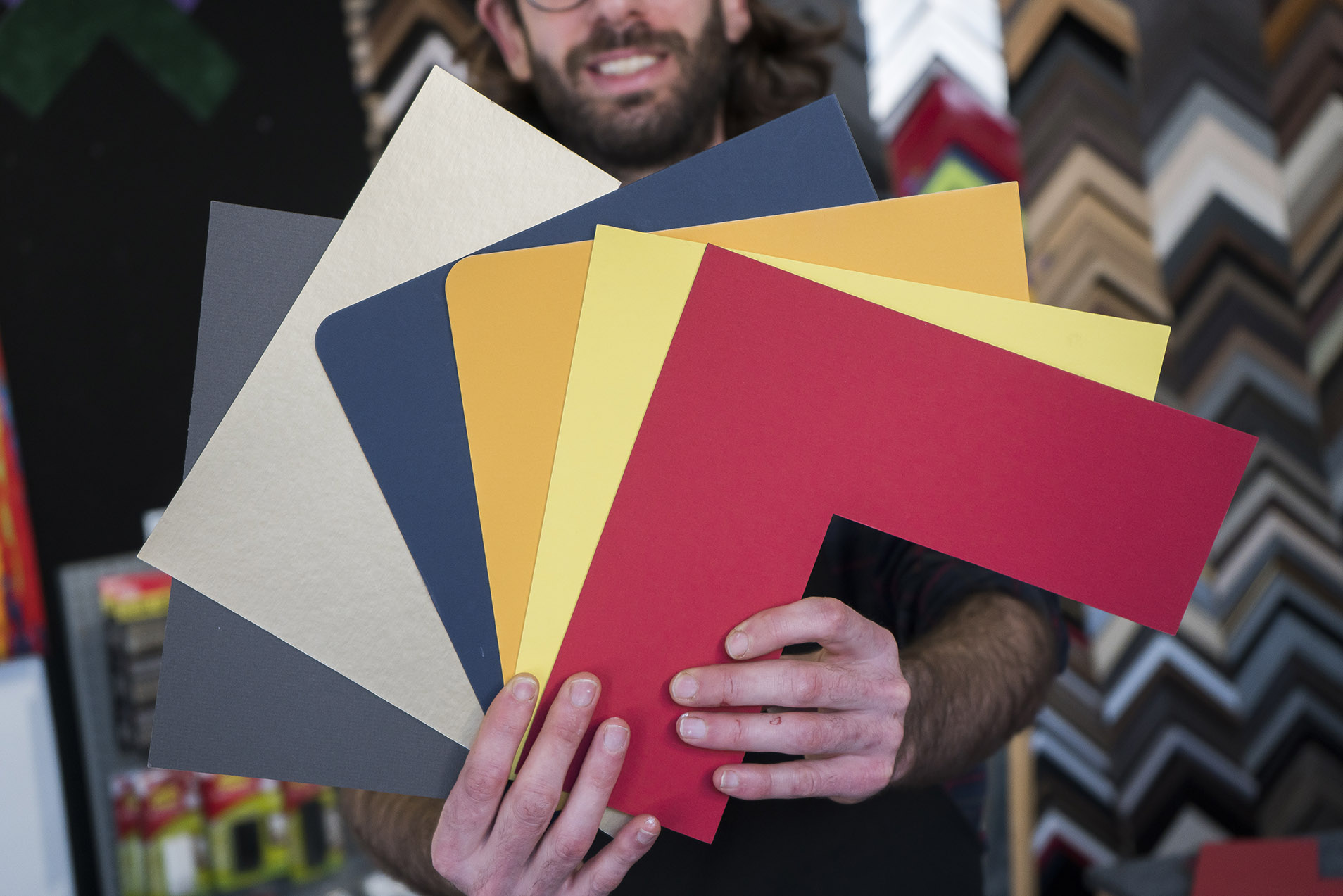
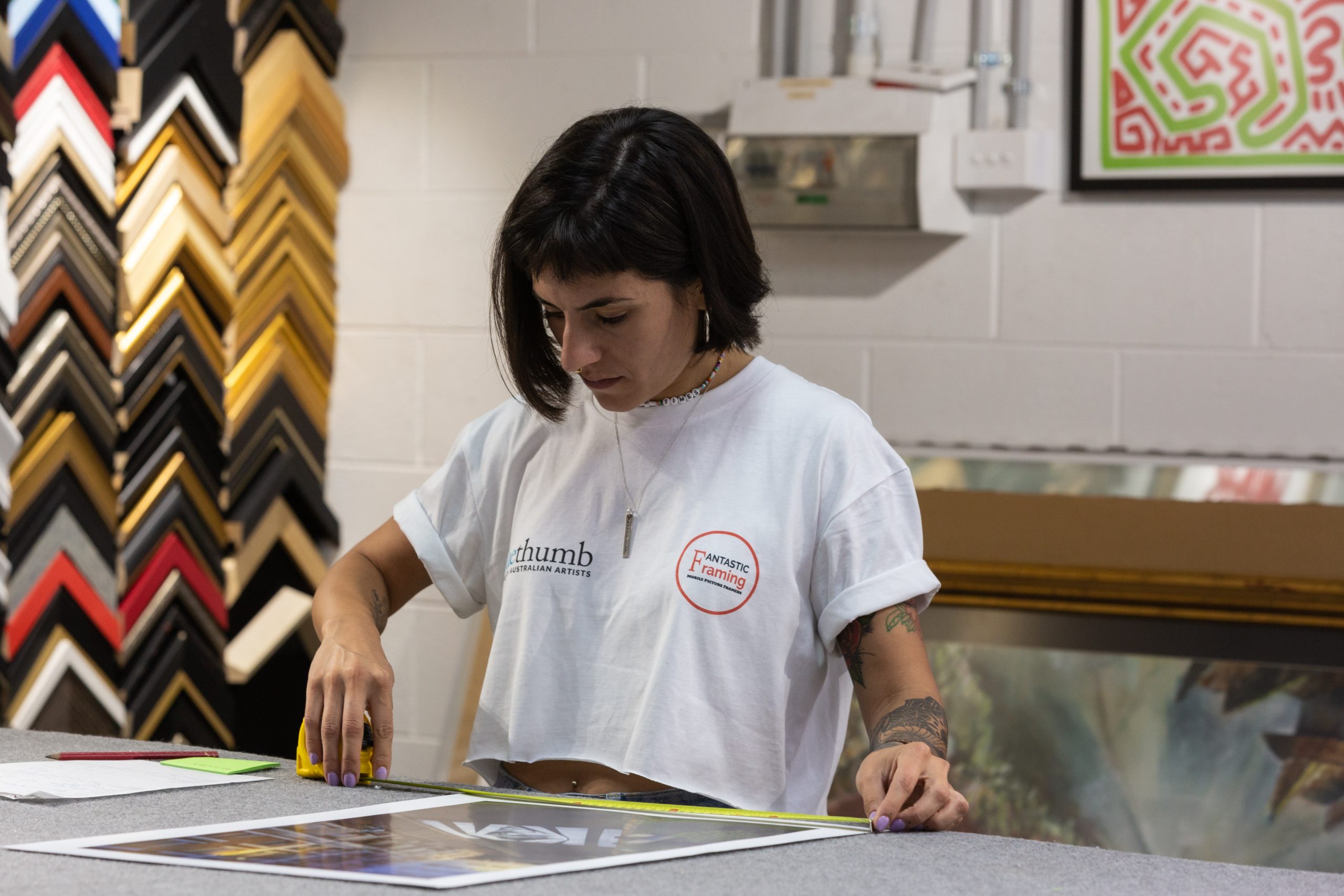


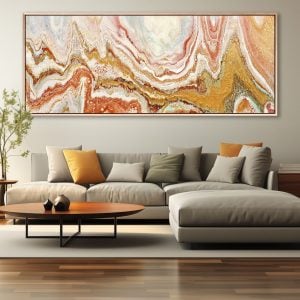








The non-reflective qualities for framing the photographic art are a common enquiry from my clients. Thanks for providing good information about this.!!
Great service. Well worth the wait time.
I am an artist located in Brisbane city. I’d like to know if you have a branch in Brisbane or have framers who are linked to your business or to Bluethumb. I’d really appreciate your response to my query. Thank you